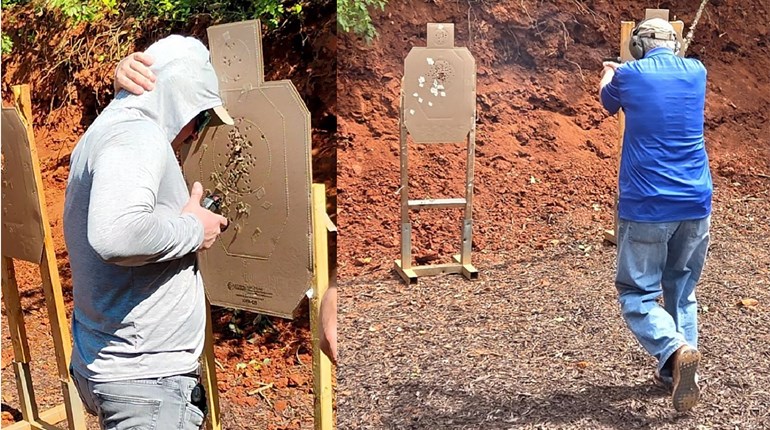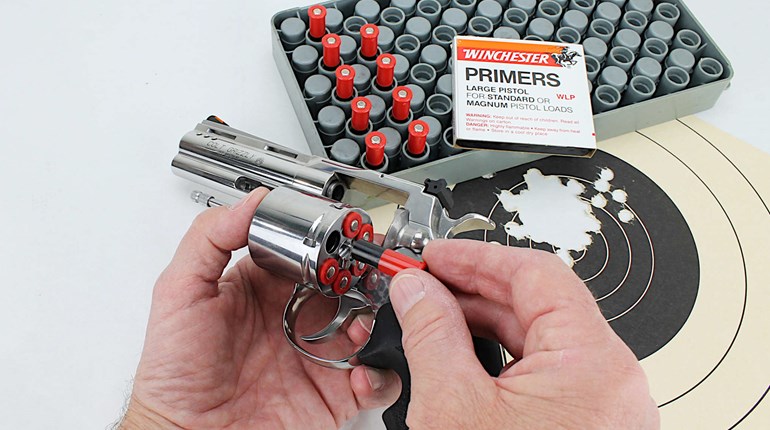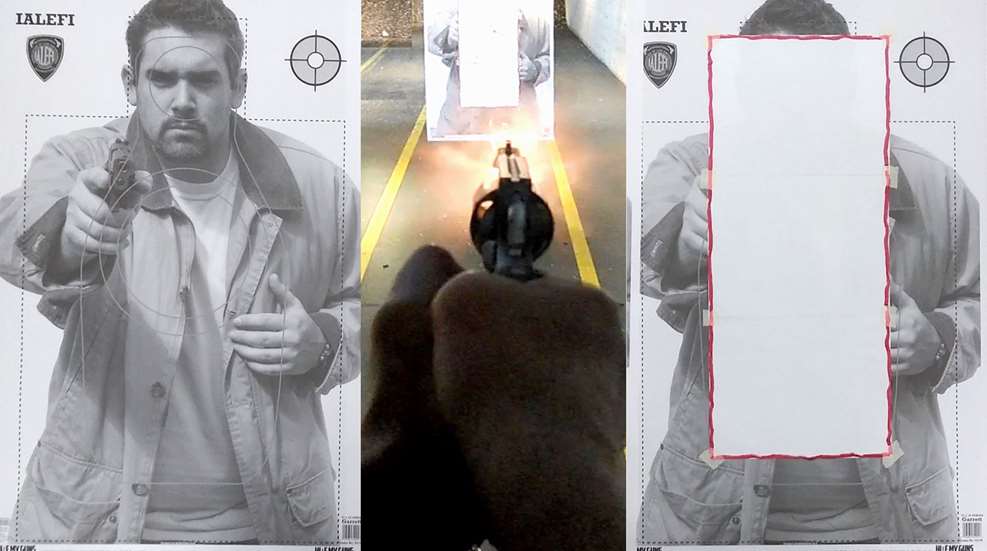
Most new gunowners don’t know how to practice shooting to improve their marksmanship. The shooting practice seen on spy and police shows is ridiculous and gives a bad idea about how to practice to be a better shot. Gunowners who organize their shooting practice will build their marksmanship skills rapidly. This is the first in a series of articles about how to use the framework of State Level CCW Qualification Courses to improve marksmanship skills for new gunowners.
Using CCW Qualification Courses is one method of placing some structure into shooting practice. For those gunowners who live in a state that still requires a qualification to get a license to carry, shooting that state’s course-of-fire (or any course-of-fire) takes the mystery out of the qualification process and eases anxiety about shooting it for record.
Shooting a structured course-of-fire has several benefits. It builds a feeling of accomplishment and competence. The shooter (hopefully) knows that their gun actually functions, and the shooter gets to experience what the recoil and noise are like. The recoil and noise experiences are much different than most people imagine. It’s not like what comes out of a TV’s speakers.
Qualification courses have several advantages for new shooters. They are structured, meaning the shooting position, number of rounds, reloads, shots and distances are specified. The shooter therefore knows exactly what they are expected to do and has to perform a variety of skills. All the courses require 50 rounds or less. With only a few exceptions, courses are scored. From the scoring, shooters then get explicit feedback about how well they can shoot. A specific target is used, and the distances are stated. Most are untimed and don’t require drawing from a holster, which makes them workable on public ranges. And they are easy to understand, given the right formatting.
Most states that enacted Shall-Issue license-to-carry laws after Florida did in 1987 included a shooting-qualification test as part of the licensing process. As run during the testing, the courses of fire were designed for ease and speed of administration and overall scoring. There is no feedback to the shooter until the entire test is over. This limits their value in the training and practice context. However, by taking the basic outline of such tests and then applying a learning structure to them, they can be valuable tools for a new gunowner.
One of the simplest and shortest of such courses-of-fire was created by the Michigan Council Of Law Enforcement Standards (MCOLES) as the “MCOLES CCW Basic Safety Training Assessment Course of Fire.” It was developed when Michigan enacted Shall Issue in 2001. Although the shooting requirement was changed by 2015 legislation simply to “at least 30 rounds of ammunition”, the Basic Safety Training Assessment Course of Fire is quite useful for beginning shooters as the basis for practice. It is a very workable course-of-fire for five-shot revolvers. The demonstration for this article was done with a Taurus 856 .38 Spl snub nose revolver and Blazer ammunition. Reloads were done using the Zeta6 K-Pak2 Speedloader equipped with a retention ring.
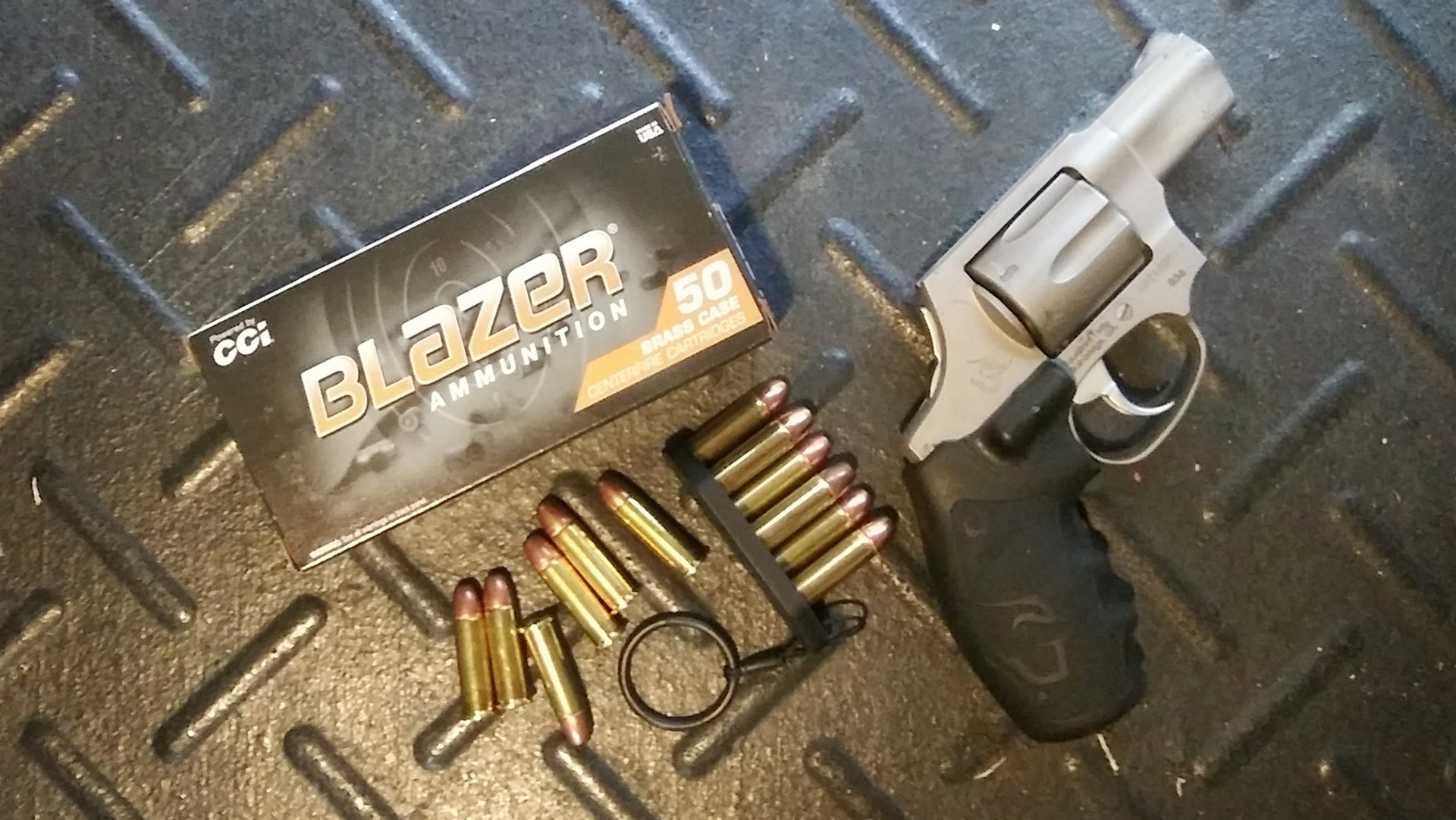
The MCOLES target is straightforward and readily available. It is made by stacking three sheets of letter-size paper vertically on a target backer. This creates a blank target that measures 25½ inches long by 11 inches wide. It can be placed on any target backer such as a piece of cardboard or taped to a silhouette target. An interesting aspect of the target is that it measures 281 square inches while the original FBI Q target measures 275 square inches.
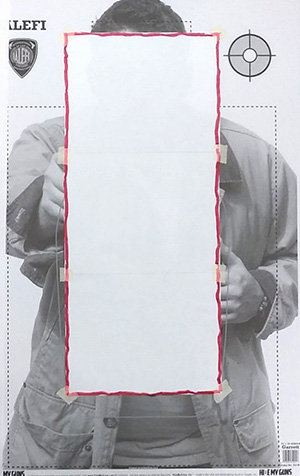
The starting position is low ready. This means having the gun pointed below the target approximately where a vertical line running downward through the target would meet the ground. When at the Ready position, the trigger finger is kept straight, outside the trigger guard and alongside the frame of the pistol.
To shoot the MCOLES Course of Fire, place the target at 4 yards (12 feet). The Basic Assessment consists of 15 shots:
- Load five rounds. If the pistol is double action, decock before returning to low ready.
- Come to low ready, pointed below the target.
- Aim the pistol at the target with both hands.
- String 1 – Fire five rounds.
- Reload with five rounds. If the pistol is double action, decock before returning to low ready.
- Return to low ready, pointed below the target.
- Aim the pistol at the target with both hands.
- String 2 – Fire five shots.
- Reload with five rounds. If the pistol is double action, decock before returning to low ready.
- Return to low ready, pointed below the target.
- Aim the pistol at the target with both hands.
- String 3 – Fire five shots.
- Clear the pistol of all ammunition and double check your pistol is clear of ammunition.
The standard required by MCOLES was to have all five shots of at least two of the three strings hit the target. A hit anywhere on all three sheets of paper counted. Ideally, all 15 shots would hit the target.
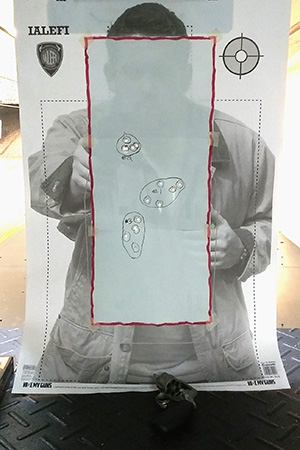
For some shooters, that 15 rounds will be all they wish to fire. Small pistols such as five-shot .38 Special revolvers and subcompact .380 ACPs can be very uncomfortable to shoot more than that. But by shooting those 15 shots, the shooter will know where they shoot their gun, which is not necessarily the same as where the gun actually shoots. If the gun shot all 15 rounds without a malfunction, so much the better. And the shooter will know what the recoil feels like and what gunshots sound like, which are important bits of knowledge.
The shooter will also have had to acquire the target (place the sights on it) three times and reload after firing at least twice. If the gun experienced any malfunctions, the shooter will have gained experience at clearing the malfunctions.
An interesting historical note is that the MCOLES Basic Assessment bears some commonalities with the Recruit Training Programme detailed in the 1942 book Shooting To Live by Captains Fairbairn and Sykes of the Shanghai Municipal Police. Shooting To Live is esteemed to this day in the point-shooting (unsighted fire) training community as a training methodology and consisted of firing 16 shots. The noteworthy difference of the MCOLES Assessment from Shooting To Live is that the first two firing practices (six shots and five shots) in Shooting To Live were fired at two yards rather than four. Shanghai Recruits only incremented to shooting at four yards in the third Firing Practice of the Recruit Training Programme.
Shooters who feel up to some additional practice could take the assessment to the next level by repeating the exercise but only shoot one shot at a time for 15 additional rounds.
- Load five rounds. If the pistol is double action, decock each time before coming to low ready.
- Come to low ready, pointed below the target.
- Aim the pistol at the target with both hands.
- Fire one shot.
- Return to low ready.
- Fire another shot.
- Return to low ready.
- Continue the process until you have fired five shots, one at a time.
- Reload with five rounds.
- Repeat the process twice, firing one round at a time for a total of 15 additional rounds.
In this additional practice, the shooter will have acquired the target 15 times. There will also have been two reloads after firing. If the gun experienced any malfunctions, the shooter will have cleared them.
Those shooters who are game for more additional practice can shoot with the primary hand only. Your primary hand is the one you write with and hold the pistol with.
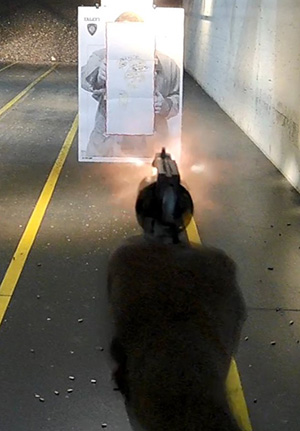
Practice shooting two strings of five shots and then one string of five single shots.
- Load five rounds. If the pistol is double action, decock each time before coming to low ready.
- Come to low ready, pointed below the target, using the primary hand only.
- Aim the pistol at the target.
- String 1: Fire five shots.
- Reload with five rounds using both hands. If the pistol is double action, decock each time before coming to low ready.
- Return to low ready, pointed below the target, using the primary hand only.
- Aim the pistol at the target with both hands.
- String 2: Fire five shots.
- Reload with five rounds using both hands. If the pistol is double action, decock each time before coming to low ready.
- Return to low ready, pointed below the target, using the primary hand only.
- Aim the pistol at the target.
- String 3: Fire one shot.
- Return to low ready.
- Fire another shot.
- Return to low ready.
- Continue the process until you have fired five shots, one at a time.
To finish up a box of 50 rounds, shoot the final five shots with the support hand only. That’s the hand you don’t normally write with or hold the pistols with.
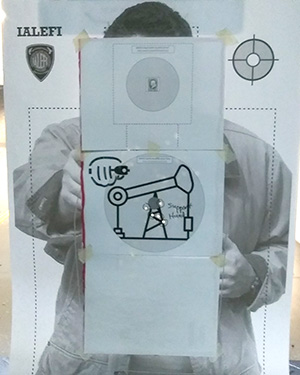
Total for the session is 50 rounds. Shooters who fire at least one box of ammo after purchasing a handgun will have a much better understanding of how their pistol works and what they are capable of hitting with it. That’s a valuable experience.
If you would like to download a cheat sheet for the course to take with you to the range, it’s available at thetacticalprofessor.net. There are also some cool downloadable printable targets if you find the MCOLES target boring.










